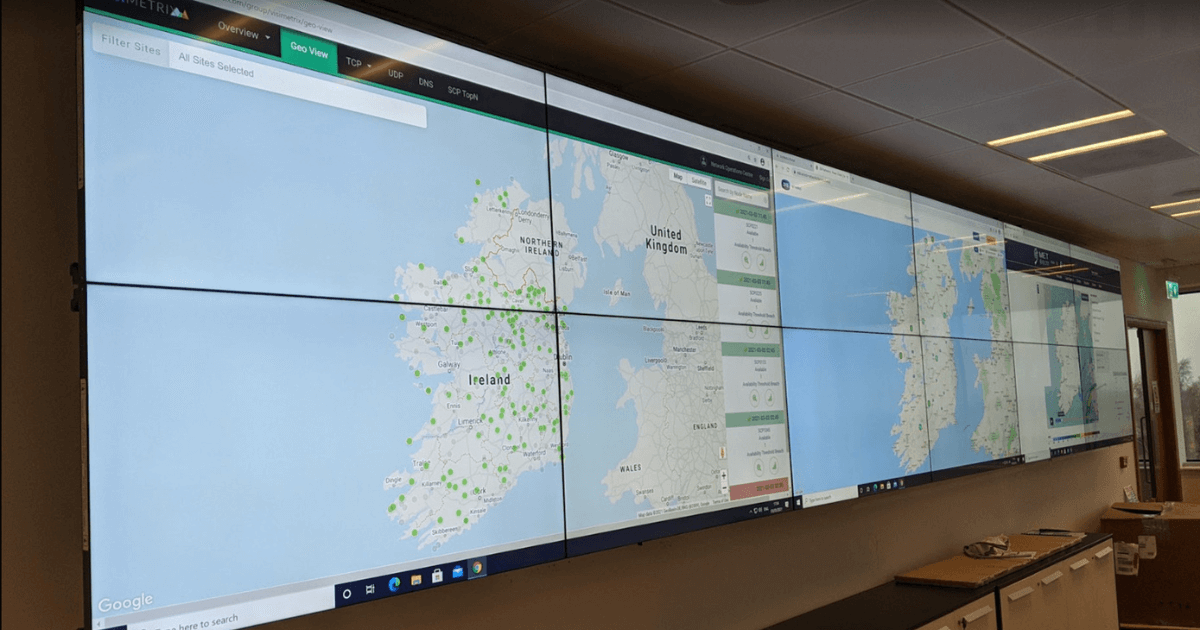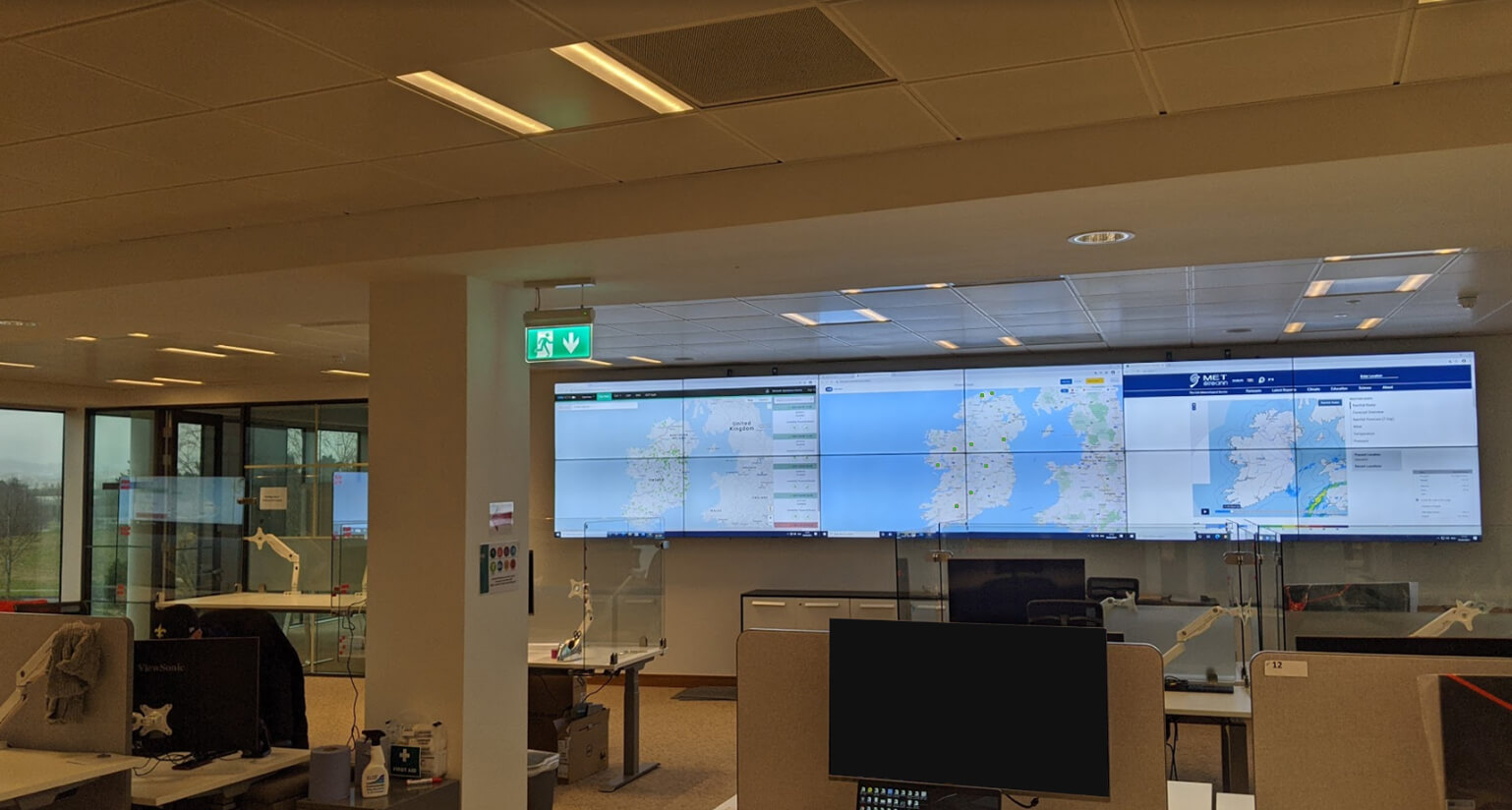POSTED ON 19 JUL 2022
READING TIME: 7 MINUTES
The benefits of moving to an intelligent Network Operations Centre (iNOC)

For some people, the term Network Operations Centre (NOC) might conjure up images of a control room from a seventies sci-fi film. Picture a room filled with giant screens, where people in beige shirts panic whenever a flashing light comes on.
That’s a far cry from the new generation of intelligent Network Operations Centres (iNOCs), which are no longer reactive centres where operators simply respond to alarms. iNOCs now help operators maintain network performance, anticipate infrastructure problems and inform investment strategy.
Network operators can now access more data than ever before. Making sense of that data can be a challenge, especially in a busy NOC. Throw in technological advances and changing customer habits and it’s easy to see why many teams are making the transition to a more data-driven approach. This uses the latest machine learning and AIOps tools to automate low-risk tasks and unlock new insights with predictive analytics.
Build on a traditional NOC
A traditional NOC allows a technical team to identify potential threats and review the performance of your network. Specifically, it lets them:
- Detect anomalies and resolve potential issue
- Take preventative measures to preserve network integrity
- Pre-empt cyberattacks
- Oversee and maintain equipment (servers, devices, peripherals)
- Oversee and maintain software (firewalls, anti-virus, driver updates)
- Access disaster recovery, including backup and storage
- Use incident management to understand threats
- Track, measure and recalibrate network performance
That was once enough, but telecom operators now face new challenges, like storing and processing higher data volumes from increasingly diverse sources. That includes data from streaming sites, IoT services or over-the-top apps like WhatsApp and Facebook across a variety of connected devices.
In some cases, NOC teams are using data architectures that weren’t designed to handle such data volumes. A different approach is required to optimise the performance of a modern telecom ecosystem - one that takes advantage of efficient, highly-scaleable cloud infrastructure and next-generation tooling.
An iNOC can see all nodes, network applications, services and technologies, giving it a 360 degree view of the network and services. This makes it an invaluable source of data for network health assessment and planning. Better insights ultimately lead to improved efficiency and performance, and happier customers.
Get ahead of potential problems

Traditional NOCs react well to inbound incidents but iNOCs take a proactive approach by anticipating potential threats before they happen. Remember that sci-fi film set? What if the lights flashed a week before an issue arose? If you knew when and where additional support would be required, service assurance teams could address a problem before it became a problem.
Modern networks have multiple technology layers that cooperate but operate independently. This makes traffic patterns difficult to forecast and challenging to decipher, even when working with seemingly simple KPIs. For example, the relationship between dozens of underlying technical metrics influences congestion, jitter, delay and packet loss.
An iNOC needs to be able to dynamically interpret vast amounts of raw metrics from multi-technology environments to uncover useful insights. This lets it understand and anticipate a network’s underlying patterns of behaviour to identify current or future problems. That’s where data science and machine learning models can help operators extract data from multi-vendor systems, predict trends, identify problems, assess customer impact and facilitate early intervention.
A modern iNOC uses AIOps tools and data science to better understand service performance and traffic flow (changes in traffic flow characteristics can point to deep-seated problems with the network or other third party issues). Here are a few examples:
- Predictive analytics use advanced modelling to learn patterns in the network data and make predictions based on historical or hypothetical ‘events’. This analysis can be augmented by third party data sources for increased accuracy. For instance, we developed a machine learning model that could accurately predict bad weather’s impact on Quality of Service levels within the radio access network. It uses advanced feature engineering, multi-step forecasting, historical time series datasets, and weather forecast data to predict Received Signal Level values seven days in advance. Received Signal Level is an important indicator of Quality of Service. We’ve already introduced this new technology into our AIOps enabled network service analytics solution, VisiMetrix™.
- Anomaly detection and baselining can warn operators about unusual events. Clustering organises thousands of network entities into groups based on tracked behaviour over time. This allows the behaviour of the network to be learned, reconstructed, and predicted using multi-step forecasting and autoencoders. Once a clustering model knows what the network should do, it monitors the network for any unexpected behaviour or anomalies.
- Adaptive thresholds, event correlation and advanced alerting are able to flag problems in real time, giving you greater visibility of your network data, service characteristics and quality measurements. You can adjust the sensitivity of thresholds to cater for systems with a higher tolerance.
- Machine learning models also support capacity analysis for network resource availability. Data-driven forecasts provide operators with a better understanding of where investment or infrastructure upgrades will be required, both now and in the future.
The benefits of an intelligent NOC
An iNOC provides more detailed, granular views that allow technical teams to monitor and analyse system performance, preemptively tackling issues that could impact services. The evolution of data analytics and data science has resulted in new and inventive ways to identify warning signs or network issues. This helps to avoid service-level agreement breaches, which can result in costly penalties or reputational damage.
We know that network congestion or disruption can test customer loyalties. Consistent speeds and connectivity topped households’ wishlists in a recent EY Digital Home survey. Almost a third of respondents said they would pay more for backup connectivity. Addressing connectivity problems at source will keep your network operating at an optimal level, which ultimately improves customer retention.
An effective iNOC should:
- Automate ‘low-level’ or first line manual procedures
- Quickly identify and assign tasks to the appropriate support queue
- Provide detailed insights to empower second and third level operatives, allowing for quicker response times and delegation of responsibilities
- Improve interdepartmental workflows, meaning a faster resolution time for customers
- Increase employee morale and retention by reducing the number of cases requiring manual intervention
- Offer a holistic 360° view, providing insights via dashboards or reports for key stakeholders
The move to an iNOC can be a catalyst for organisations to transform their operating model and embrace digital transformation. It lets you adopt a proactive, data-driven approach that can require a cultural shift as much as a technological one. It can therefore be a challenge, requiring people and technology to work in harmony, with a clear operational strategy in place to support the transformation.
Our future-focused partnerships
Futureproofing new technologies and ensuring minimal disruption to services was a key priority when we formed our partnership with Vodafone. This led them to adopt VisiMetrix™.
Not only can VisiMetrix™ predict traffic congestion and inefficiencies within their network, but it combines network performance visualisation, monitoring and analytics on a single platform, enabling end-to-end service management. It can extract data from multi-vendor systems, predict trends, assess customer impact and facilitate early intervention.
Other communication service providers are also taking steps to evolve their NOC. Each organisation has unique challenges and specific goals. The key is to understand your customer’s behaviour and how they interact with your services.
Evolving toward an iNOC will help you to manage that information and decide what to do with it. Improved analytics, better predictive modelling, data-driven insights, better network traffic flow – the tools to give your organisation a competitive edge already exist.
It’s a significant departure from the reactive NOCs of the past. iNOCs help you make proactive decisions based on more reliable information. That can serve your organisation and your customers, both now and in the months or years ahead.
If you want to know more about becoming an iNOC or adopting the technology to make the move, get in touch with us. We can discuss your needs, answer any questions, or provide a demonstration of VisiMetrix™.